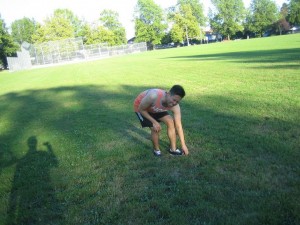Gout is a common form of arthritis that is often described as swelling of the joints. Gout happens when uric acid builds up in the body. Uric acid is a product of the breakdown of purines. Purines can be naturally found in the body tissues, however, they can also be found in certain foods, such as organ meats, anchovies and beer. Normally, uric acid dissolves in the blood and is filtered in the kidneys for excretion. However, in cases of gout, there is an abnormality that causes the uric acid to build up and crystallize. When the crystals form in the joints, gout happens.
The best way to diagnose gout is to take a sample fluid from the joints to check for uric acid crystals, but a blood test may also be done to check the levels of uric acid in the blood.
https://www.youtube.com/watch?v=SH_ceFaKLA8
Risk Factors of Gout
Gout can happen to anyone and at any age. However, there are certain factors that can increase a person’s likelihood of getting this form of arthritis:
- Men – although studies have shoes that women can increase their chances after menopause
- Obese individuals
- Eating too many foods that are high in purines
- Alcohol
- Family history of gout
Signs and Symptoms of Gout
The joint that is usually first affected by gout is the base of the big toe. However, as the disease progresses, the gout attacks happen more frequently, last for a longer period of time and affect more joints, such as the elbows, wrists, fingers, knees, ankles and heels. In some cases, gout attacks have lasted for months.

- Begins with sudden, intense pain on the big toe that is most severe during the first four to twelve hours after onset.
- When the pain disappears, a persistent discomfort may last ranging from a few days to a few weeks
- Warmth, redness, swelling, stiffness and tenderness of the joints affected
- Decreased in joint mobility (as gout progresses)
First Aid Management for Gout
Gout can occur at any time of the day but it often manifests at night and almost abruptly. It can awaken a person who is asleep. Thus, one must be prepared to administer first aid anytime within the day.
- Take corticosteroid medications that is prescribed by the doctor as soon as the attack starts
- Doctor may also give a shot of corticosteroids
- Enroll in First Aid Training to learn how to manage symptoms of pain and swelling of gout and other medical conditions
How to Avoid Gout
The best way to avoid attacks of gout is to avoid consumption of foods that are high in purine content. Diet for individuals prone to gout aims to control the production and elimination of uric acid within the body. Some of the best foods to AVOID include:
- Meats: lamb, goose, beef and pork
- Organ meats: liver, heart, kidneys, brain
- Seafood: anchovies, sardines, herring, mackerel, scallops, mussels
- Sweetbreads
- Gravy
- Beer
- Sugary drinks or drinks sweetened with high-fructose corn syrup
Gout is a complex form of arthritis caused by the deposits of uric acid in the joints causing pain and swelling.
